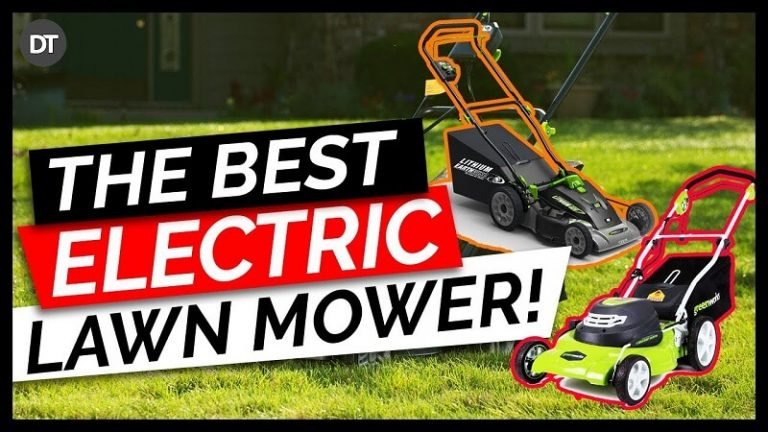Best Solar Powered Heat Lamp in 2021
Are you looking for cheap alternatives to light up your house at night? Solar-powered heat lamps are ideal for lightening and warming up your poultry and pets at night. Most of the people think solar lamps as weak dim lights while they could be the best choice to avail in winters because animals catch cold easily and fall sick.
The Solar heat lamps can provide the warmth and heat your poultry farm and pet houses need during chilly nights in winter season.
We know there is a large variety of solar lamps in the market making it difficult for people to choose. To help you choose the best, we have created a list of top solar powered heat lamps of 2021.
Solar Powered LED Bulb Light for Chicken Coops
These Solar Powered LED Light Bulbs are an excellent alternative for regular light bulbs as they save you money. You no longer have to worry about paying bill for the bulbs working overnight in your chicken coops. These solar bulbs are easy to set up. All you need to do is connect the bulbs with the solar panel using the USB cable that comes with it
These bulbs charge up completely in a few hours. In case you want fast charging, place the panel directly under the sun where it can absorb sunlight fast and more easily. They come with a separate cord that is used to connect the bulbs for charging.
The lifespan of these energy-saver bulbs is great compared to other solar lamps available in the market. If you are stressed about your high electricity bills shift to these LED bulbs immediately. They are multipurpose solar bulbs, you can take them along with you for camping or use them to lighten up your garden, chicken coop, or your patio.
Pros:
- Reduces electricity consumption
- Long lifespan
- Durable and versatile
- It comes with a USB cable, cord and a hook to place it anywhere
- These light bulbs can be used for wide range of purposes
Cons:
- These Bulbs are not waterproof which can cause problems in rainy weather.
ELELIGHT Portable Solar LED Bulb Lights
These portable solar bulbs by ELELIGHT are one of the best energy saver bulbs in the market. These bulbs can provide heat and light to your poultry with no bills. These portable bulbs can be your go-to emergency light during traveling. They serve variety of purposes including camping, hiking, decorating your garden, or lightening the outdoor area of your house. These bulbs not only provide light but also gives a smooth look with their modern design. These bulbs have lumen chips for a brighter experience. These portable lights come with a hook so you can hang them anywhere you like.
These portable bulbs by EleLight can be charged either by placing them directly under the sun or using the USB cable to connect the bulb to the panel. These bulbs charge up quickly and work for about a maximum of 8 hours. They use the most advanced technology and have an attractive design.
EleLight is an authentic brand, famous for making good quality products. These light bulbs are made with resistant plastic that offers durability and doesn’t break easily. These portable bulbs have the capacity to withstand harsh weather conditions.
Pros:
- They are easy to set up
- It offers maximum running time of almost 8hours
- It comes with a connecting cord and a hook.
- They are made from durable plastic and contains lumen chips for bright light
- They are easy to carry
- Charging method is easy
Cons:
- Light bulbs are irreplaceable
BEMEXRED Solar Lights Outdoor/Indoor
This stylish solar light by Bemexred is all you need this winter season. This solar light almost generates 800 lumens which can easily brighten up a large area. You can place it in your chicken coop to provide warm and bright environment to your chickens. Put it in your list if your pets and poultry animals have been getting sick more often. You can also use this efficient solar light for indoor purposes. Its modern design can easily match your interior setup.
These solar lights are lightweight and easy to install. It is a premium quality LED light that can work up to 18 hours after a single charge. It is ideal for people living in areas where sunlight is less. These lights only require a small amount of sunlight to get charged. Their long-lasting running time gives it advantage over other LED lights.
These solar lights by bemexred comes with a 1-year warranty So you can replace your light in case it is damaged. Another great feature of these lights is that they come with a waterproof connector which means you wiring won’t damage in rainy season. You can easily connect the bulb with the solar panel using the connector.
These budget friendly, efficient solar lights is a great option to make your pet houses comfortable and your rooms brighter.
Pros:
- It comes with a waterproof connector
- It offers 1 year warranty
- It has three light modes
- Offers 18 hours of running time in single charge
- Replaceable Batteries
Cons:
- It doesn’t come with a hook, which makes it a little difficult to setup in different locations.
Kyson Solar Shed Light
Kyson solar shed light is the best way to solve all your chicken coop problems. Kyson has a high conversion rate because of its panels that are specially designed with polysilicon. The body is so adjustable so that you can adjust it at any angle where it captures maximum sunlight. Kyson comes with white-colored LED lights, a light sensor, timer and a 2600 mAH built-in battery having a power of 3.7 volts.
After a full charge, this solar panel can stand all night (12 hours). Kyson is very durable and easy to install as you don’t need to hire any skilled person to install it.
Kyson also has an IR remote that empower its users too conveniently to switch it off and on. . Moreover, brightness can be adjusted within the 3 meters via IR remote. Kyson has 2 working modes auto and manual. Auto mode initiates the light sensor that empowers it to on and off automatically according to light frequency. Kyson solar shed light also comes with a timer that makes sure the completion of your process within the chicken coop.
Pros
• Low charging time that ranges from 6-8 hours.
• Can stand all night (12 hours).
• Convenient
• Best for indoor and outdoor purposes.
Cons
• It doesn’t hold all the equipment in one package. You have to buy them separately.
JackyLED IP65 Solar Heat Lamp
JackyLEd IP65 is one of the top-tier solar heat lamps. This solar lamp is decked out with a motion sensor, remote control and also has 4 lighting modes. Its users can control all the settings, modes and brightness levels of lamps by using a remote within the range of 6-8 meters. Each lamp of the JackyLEd IP65 holds 50 LED beads that maintain its light quality and provides an output of 600 lumens, which is enough to keep eggs warm.
JackyLEd is a unique solar heat lamp as it can work well during the daytime and also it doesn’t need to be placed outdoor. This solar powered heat lamp also holds a 16.4 feet long cable that empowers it to hang anywhere. Its charging time ranges from 6-8 hours. JackyLED IP65 can warm up your chicken coops for up to 10 hours without charging.
If you’re conscious about the environment then JackyLED IP65 is the best choice for you. It is fabricated with ABS plastic that makes it resistant to heat, high temperature, rust and many other harmful elements.
Another superb feature that makes it unique is that it also contains a 4400 mAh battery that helps in lit up your chicken coops even on a windy day.
Pros
• Contains 4 modes of lighting and 6 levels of brightness.
• Equipped with motion sensor
• Can be used for indoor and outdoor
• Ideal for patios and gardens.
Cons
• Can’t be charged in the dim sunlight.
KK.BOL Portable Solar LED Heat Lamp
If you are looking for an eco-friendly solar heat lamp option for your chicken coops then KK.BOL is best for you. This solar powered heat lamp is made up of photovoltaic cells that empower it to capture maximum sunlight. It also comes with a charger that helps it to reach the power of 5-8 volts when sunlight is not available.
KK.BOL has a unique feature of power-saving that makes it different from other solar powered heat lamps. You will be shocked by knowing that it can light up your chicken coop for 50,000 hours with a single charge. So, if you’re worried about your electricity bills then KK.BOL is here to serve you the best. Moreover, it can be used in any weather.
KK.BOL solar bulb comes with 12 LED bright lights. Each LED can give an output of 15W that s enough to warm your chicken coops. KK.BOL also offers an option for controlling the level of brightness. It can be used anywhere by just hanging it.
Pros
• No need for installation.
• Suitable for any weather.
• Eco-friendly
• 50,000 standing time.
Cons
• Its solar bulb is not waterproof.
Lampelc Solar Heat Lamp Bulb
If you love to do camping or any outdoor adventure then the Lampelc solar powered light bulb is the best option for you. It is more convenient than flashlights as it contains a hook that aids in holding the bulb. Moreover, it can light up the area to 5 meters which is far above any flashlight.
Lampelc solar bulb is also an extraordinary choice for chicken coops as it comes with 2 solar bulbs that can be hanged anywhere you want with the help of hooks. It is one of the best eco-friendly solar heat lamps that keep the environment and health safe. It can also be charged by using a charger as it contains a built-in lithium-ion battery.
The thing that makes it unique from any other product in the market is that its durability, portability and long-lasting battery time. It can run up to 500,000 hours with a single charge. Each bulb contains 12 LED beads that will serve you with clean and quality light and brightness output of 100 lumens.
Pros
• Portable.
• Easy to hang anywhere.
• Standing time of 500,000 hours.
• Comes with hooks.
• 100 lumens of brightness output.
Cons
• It is not water-proof.
Best Solar Heat Lamps Review – Final Verdict
By reviewing all the products of solar-powered heat lamps, I have come to the point that JackyLED IP65 solar heat lamp is the best option for your chicken coops. As it has 4 lighting modes and 6 different levels of brightness, equipped with a motion sensor and waterproof. Its charging time is low as compare to other solar powered heat lamps. It can run for 10 hours with the same light frequency by charging one time.






